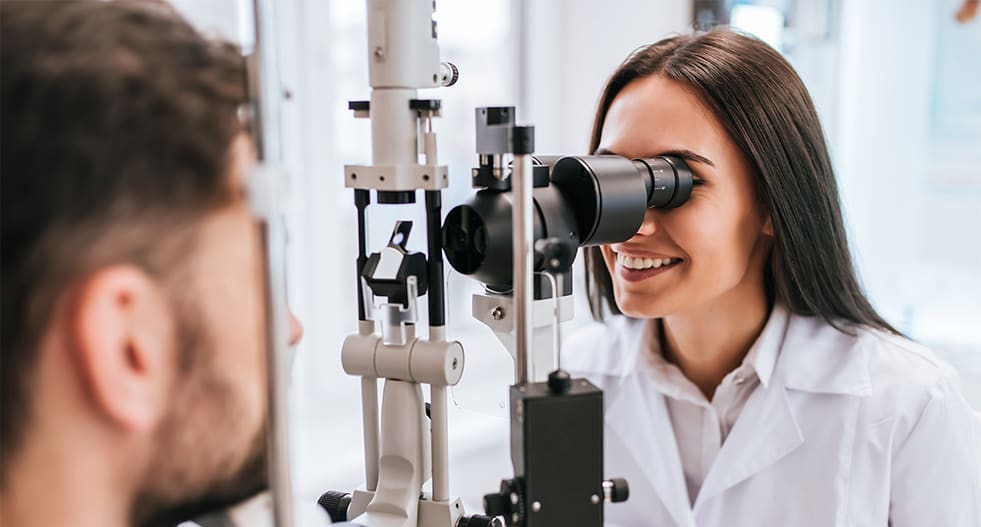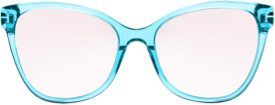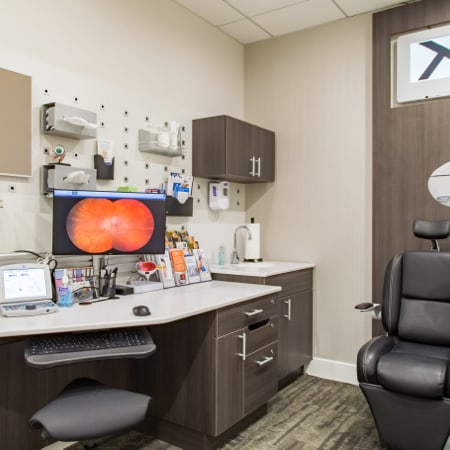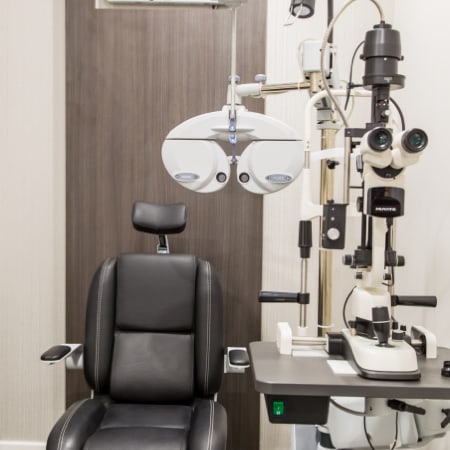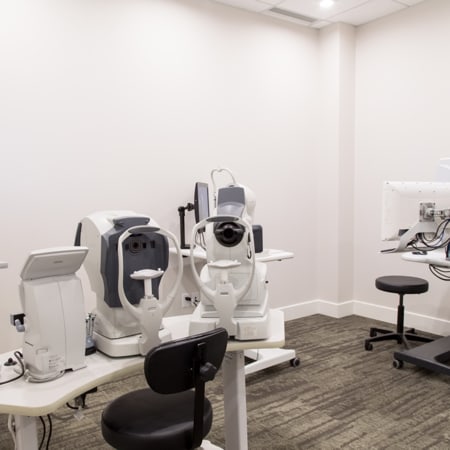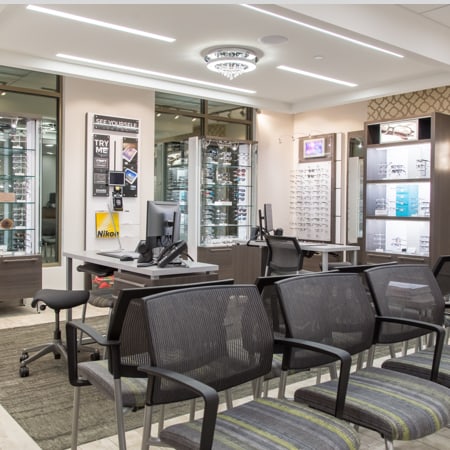Get the Full Picture of Your Eye Health
One of the most important ways that you can take care of your ocular health is through a regular comprehensive eye exam. A comprehensive eye exam is just like a physical for your eyes and provides us with a complete understanding of your vision, any vision errors, and any conditions or diseases that you have or are at risk for—some eye conditions can be present without any symptoms.
Keeping up with a regular eye exam schedule can help preserve the health of your eyes by locating problems before they progress. Get ahead of your vision health with an eye exam at our practice today!

Adult Eye Exam Frequency
To maintain ocular health and to make sure your prescription is up to date, you should be attending comprehensive eye exams regularly. The recommended frequency for adult eye exams is:
- Every 2 years for adults aged 20–64
- Every year for adults aged 65 and older
Additionally, if you are at risk for an eye disease, your doctor may require you to attend exams yearly.


Sight Test Vs. Comprehensive Eye Exam
A sight test and a comprehensive eye exam may seem like the same thing, but there are some key differences. A sight test uses automated equipment in order to test your vision for errors and determine your correct prescription. A comprehensive eye exam involves a sight test as well as examining your eye fully for any conditions such as dry eye or glaucoma, and checking on the health of the overall visual system.
Optometrists are able to complete more detailed testing during a comprehensive eye exam as well as recommend treatment options for patients.
What to Expect During Your Exam
If this is your first eye exam, or you haven’t been in a couple of years, we want to set your expectations for a comprehensive eye exam. Our team will walk you through our process every step of the way.
Before you attend your regular eye exam, come prepared with questions for us, a list of medications, and insurance information for our records.
You may be required to have a dilated eye exam, especially if you are receiving a diabetic eye exam. This can leave your eyes a bit blurry and sensitive to light. For this reason, you may want to have someone at your appointment to drive you home.
During your comprehensive eye exam, we will go over your medical history and assess any risks you may have for ocular diseases or conditions. Knowing any medical conditions you have, medications you are taking, or hereditary risks you may have can help us to get a better understanding of your vision.
To examine your vision and eye health we use a variety of tests and modern technological equipment. These tests focus on eye movement, focus, coordination, peripheral vision, vision quality, and overall health to determine the status of your sight.
If a treatment or corrective measure is something that you require, after your eyes have been tested, we will go over all of the options for your individual case. Our practice offers corrective frames and contact lenses, dry eye therapy, myopia control, laser eye surgery consultations, and eye disease management, and we are happy to discuss the right treatment option for you.
See Us Today for Your Next Exam
Taking care of your vision health is just as important as taking care of your overall health. If you are due for your next eye exam, contact us today to book an appointment.
